Beyond safety and efficiency in acute care: The experience of an embodied staff-environment interaction
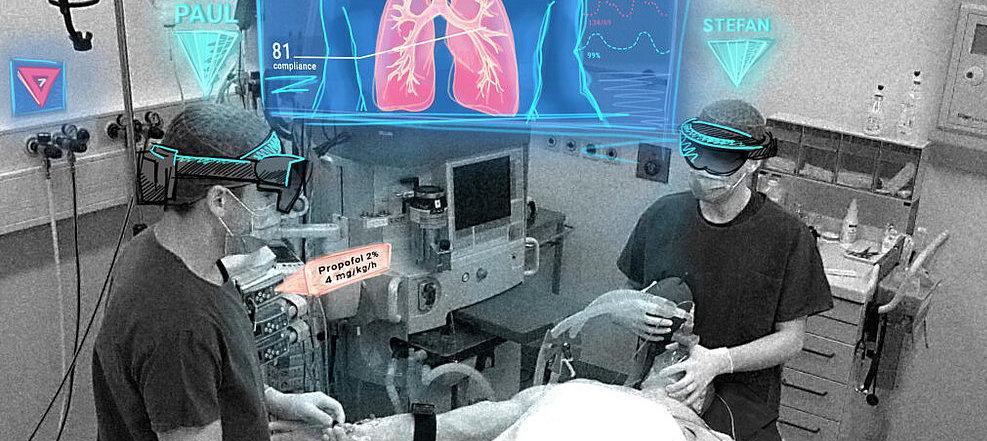
Principal Investigators
Main research Question
We aim to understand the experience of acute care staff when interacting with technology.
- Is UX a relevant concept?
- What constitutes UX in acute care?
- How can we measure and design for UX in acute care and other safety-critical domains?
Sub-Research questions
We aim to design and test pervasive interaction technology for the acute care context.
- How can we integrate pervasive interaction concepts?
- How can we improve and foster experience and clinical benefits?
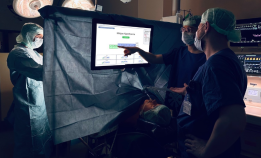
How a Clinical Decision Support System Changed the Diagnosis Process: Insights from an Experimental Mixed-Method Study in a Full-Scale Anesthesiology Simulation. (Honorable Mention Award)
S. Wolf, T. Grundgeiger, R. Zähringer, L. Shishkova, F. Maas, C. Dilling, and O. Happel.
CHI 2025

Augmented Reality Cues Facilitate Task Resumption after Interruptions in Computer-Based and Physical Tasks.
K. L. Bahnsen, L. Tiemann, L. Plabst, and T. Grundgeiger
CHI 2024

User experience in safety–critical domains: a survey on motivational orientations and psychological need satisfaction in acute care.
A. Hohm, O. Happel, J. Hurtienne, and T. Grundgeiger
Springer: Cognition, Technology and Work 2022

Design and Evaluation of a Head-Worn Display Application for Multi-Patient Monitoring (Honorable Mention Award)
J. Kuge, T. Grundgeiger, P.D. Schlosser, P.M. Sanderson, and O. Happel
DIS 2021
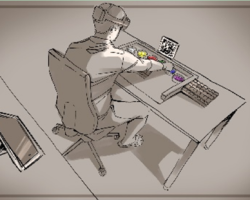
AR Cue Reliability for Interrupted Task Resumption Affects Users’ Resumption Strategies and Performance (Honorable Mention Award)
K. L. Bahnsen, E. Dischinger, and T. Grundgeiger
CHI 2025
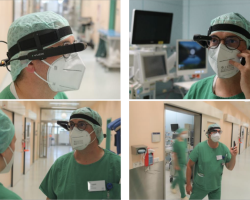
Supervising Multiple Operating Rooms Using a Head-Worn display: A Longitudinal Evaluation of the Experience of Supervising Anesthesiologists and Their Co-Workers
T. Grundgeiger, A. Münz, P.D. Schlosser, and O. Happel
CHI 2023
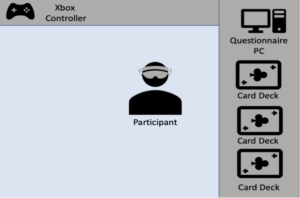
Push the Red Button: Comparing Notification Placement with Augmented and Non-Augmented Tasks in AR.
L. Plabst, S. Oberdörfer, F. Ortega, and F. Niebling
SUI 2022

It’s okay, honey… shhh…” The Media Equation and Computers Are Social Actors Hypothesis
A. Hohm, O. Happel, J. Hurtienne, and T. Grundgeiger
MuC 2021
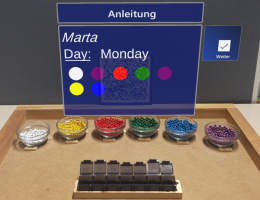
Motives and Fluent Interaction in Clinical Documentation: An Experience-Based design for a Documentation Tool in Anesthesiology.
T. Grundgeiger, C. Juranz, and O. Happel.
Human Factors in Healthcare, 2024
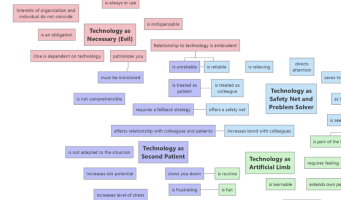
“When the beeping stops, you completely freak out” – How acute care teams experience and use technology. (Honorable Mention Award)
A. Hohm, O. Happel, J. Hurtienne, and T. Grundgeiger
CSCW 2023
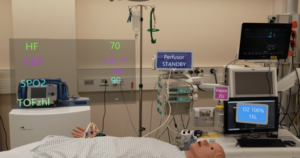
Visualisation methods for patient monitoring in anaesthetic procedures using augmented reality
Plabst, L., Oberdörfer, S., Happel, O. and Niebling, F.
VRST 2021
- Sara Wolf, Tobias Grundgeiger, Raphael Zähringer, Lora Shishkova, Franzisca Maas, Christina Dilling, and Oliver Happel. 2025. How a Clinical Decision Support System Changed the Diagnosis Process: Insights from an Experimental Mixed-Method Study in a Full-Scale Anesthesiology Simulation. In the Proceedings of the CHI Conference on Human Factors in Computing Systems Proceedings (CHI ’25), Yokohama, Japan. https://doi.org/10.1145/3706598.3713372 (Honorable Mention Award)
- Kilian L Bahnsen, Emma Dischinger, and Tobias Grundgeiger. 2025. AR Cue Reliability for Interrupted Task Resumption Affects Users’ Resumption Strategies and Performance. In the Proceedings of the CHI Conference on Human Factors in Computing Systems (CHI’25). https://doi.org/10.1145/3706598.3713685 (Honorable Mention Award)
- Tobias Grundgeiger, Christian Juranz, and Oliver Happel. 2024. Motives and Fluent Interaction in Clinical Documentation: An Experience-Based design for a Documentation Tool in Anesthesiology. Human Factors in Healthcare, 5, 100071. https://doi.org/10.1016/j.hfh.2024.100071
- Kilian L Bahnsen, Lucas Tiemann, Lucas Plabst, and Tobias Grundgeiger. 2024. Augmented Reality Cues Facilitate Task Resumption after Interruptions in Computer-Based and Physical Tasks. In the Proceedings of the CHI Conference on Human Factors in Computing Systems (CHI’24). https://doi.org/10.1145/3613904.3642666
- Hohm, A., Happel, O., Hurtienne, J., & Grundgeiger, T. (2022). User experience in safety–critical domains: a survey on motivational orientations and psychological need satisfaction in acute care. Cognition, Technology & Work (24), 247–260. https://doi.org/10.1007/s10111-022-00697-0
- Hohm, A., Happel, O., Hurtienne, J., & Grundgeiger, T. (2021). “It’s okay, honey… shhh…”-The Media Equation and Computers-Are-Social-Actors-Hypothesis in Acute Care: “Ist ja gut, Schätzelein… shhh…”-Die Media Equation und Computers-Are-Social-Actors-Hypothese in der Akutmedizin. Mensch und Computer (pp. 265-269). http://dx.doi.org/10.1145/3473856.3474227
- Hohm, A., Happel, O., Hurtienne, J., & Grundgeiger, T. (2023). “When the beeping stops, you completely freak out” – How acute care teams experience and use technology. ACM Conference on Computer-Supported Cooperative Work And Social Computing (CSCW). https://doi.org/10.1145/3579590
- Kuge, J., Grundgeiger, T., Schlosser, P. D., Sanderson, P. M., & Happel, O. (2021). Design and Evaluation of a Head-Worn Display Application for Multi-Patient Monitoring. ACM Conference on Designing Interactive Systems (DIS). [Honorable Mention; UPA 2021 UX Challange 1st place] http://dx.doi.org/10.1145/3461778.3462011
- Grundgeiger, T., Münz, A., Schlosser, P. D., & Happel, O. (2023). Supervising Multiple Operating Rooms Using a Head-Worn display: A Longitudinal Evaluation of the Experience of Supervising Anesthesiologists and Their Co-Workers. ACM Conference Extended Abstracts on Human Factors in Computing Systems (CHI). http://dx.doi.org/10.1145/3544548.3581180
- Plabst, L., Oberdörfer, S., Happel, O. & Niebling, F. (2021). Visualisation methods for patient monitoring in anaesthetic procedures using augmented reality. ACM Symposium on Virtual Reality Software and Technology (VRST ’21).http://dx.doi.org/10.1145/3489849.3489908
- Plabst, L,. Oberdörfer S., Ortega F., & Niebling F. (2022). Push the Red Button: Comparing Notification Placement with Augmented and Non-Augmented Tasks in AR. ACM Symposium on Spatial User Interaction (SUI ’22) http://dx.doi.org/10.1145/3565970.3567701